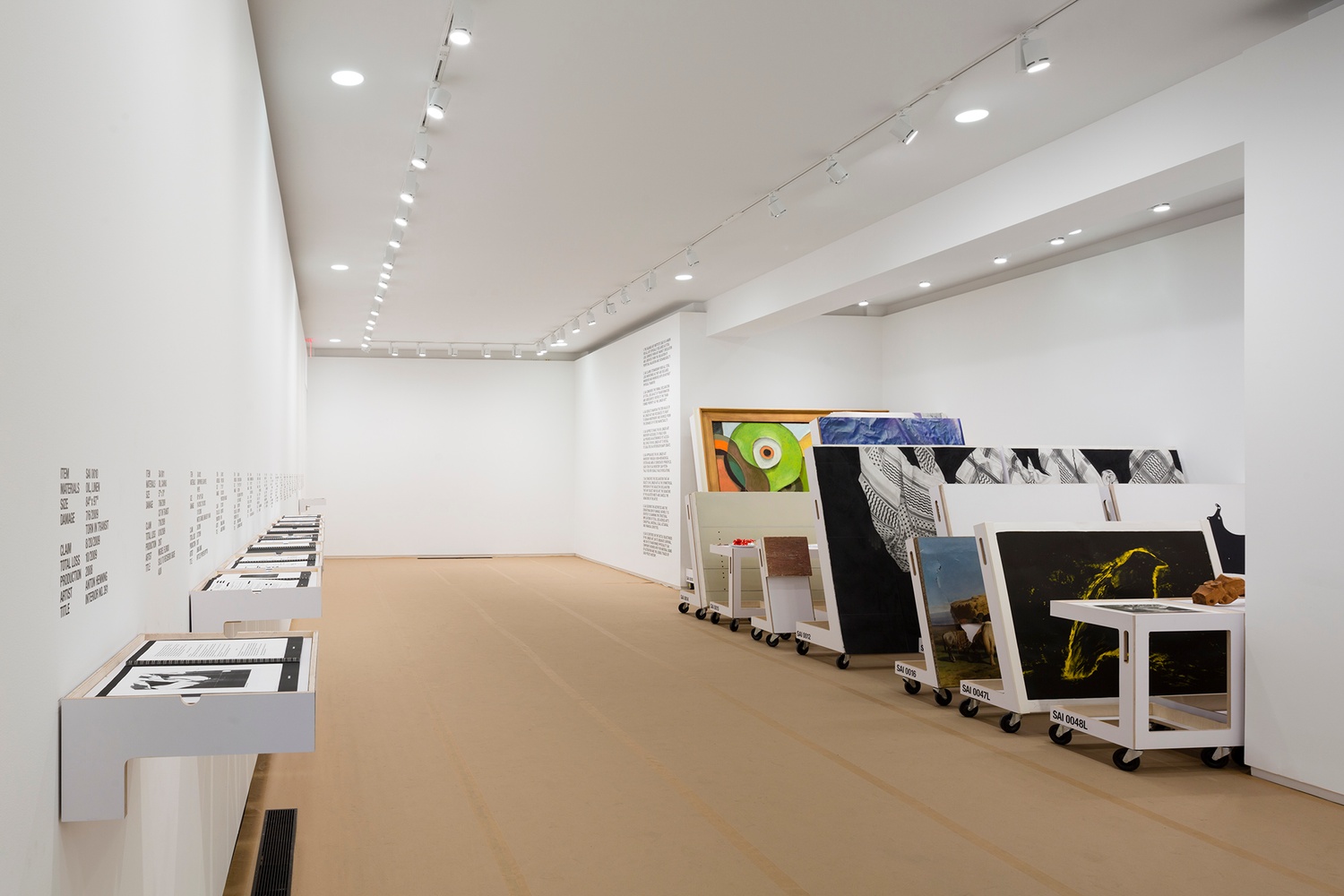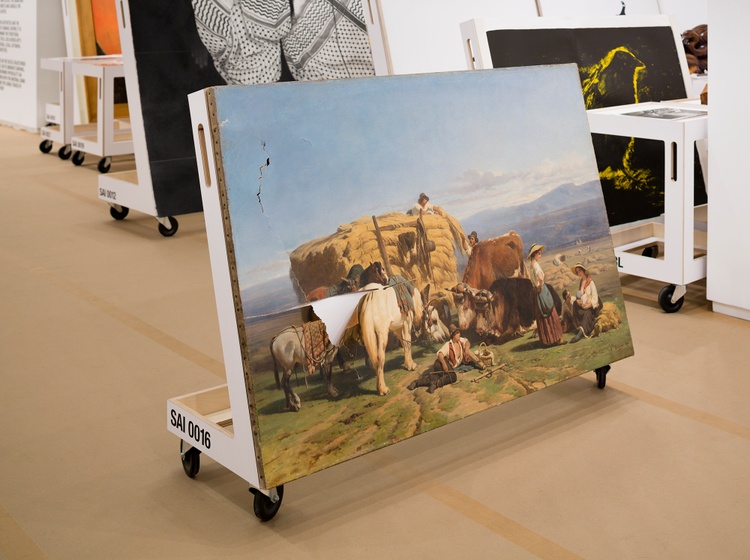Drawn from the art insurance lexicon, the term “salvage art” refers to works
removed from art circulation due to accidental damage. Salvage pieces are
subject to a peculiar and transformative actuarial logic. Once “total loss”
status has been declared and indemnification has been paid, salvage art is
considered officially devoid of value. Its objects are cast into art’s nether
world, no longer alive for the market, gallery or museum system, but often still
relatively intact. Salvage art is liberated from the burden of constant
valuation and the obligation of exchange, yet abandoned to the invisibility of
perpetual storage.
Founded by Elka Krajewska, the Salvage Art Institute (SAI) supplies a refuge
for salvaged art pieces. The survival of salvage art even past its total
devaluation confronts our common understanding of where art ends, disturbing the
distinction, organization, and separation of art from non-art. The Salvage Art
Institute offers a platform for exposing, viewing and encountering the
condition of salvage art and provides a forum for engaging the regulation of its
financial, aesthetic and social value.
In spring 2012 The Salvage Art Institute accepted a gift of its first salvage
art inventory, which comprises the core of the exhibition. The salvaged works in
No Longer Art: Salvage Art Institute are identified by their SAI acquisition
numbers. A numerical index relates each piece to its insurance claim, and to the
process of evaluation and judgment through which it has been made salvage and
transmuted into “no longer art.” Where available documentation describing the
damage and the steps toward total loss designation is displayed.
The Salvage Art Institute’s mandate is to maintain the separation of value from its no longer art inventory. No Longer Art: Salvage Art Institute,
the first public appearance of the SAI, follows this objective, simultaneously
opening the inventory to scrutiny while attempting to momentarily suspend the
force of attraction between its objects and value.


















